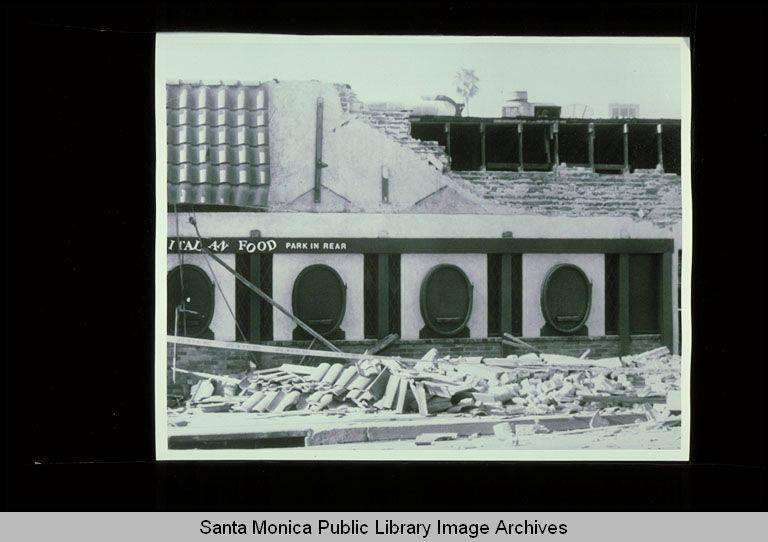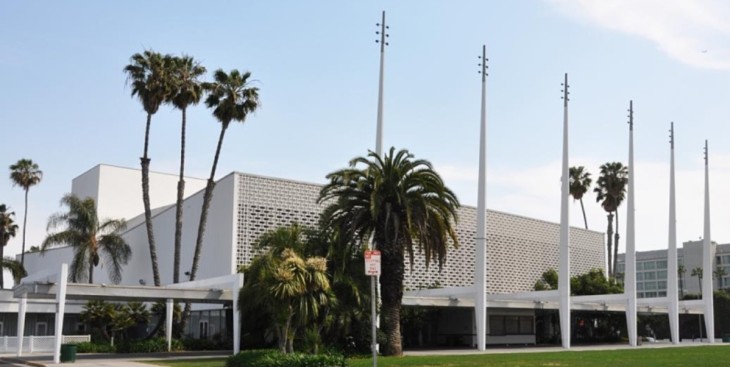
Last month the City issued a follow-up report on its success in complying with its Seismic Retrofit Program. This 2017 Ordinance identified 1964 vulnerable buildings that might suffer significant damage in a large earthquake. This belated response came about because of the lessons learned from the 1994 Northridge earthquake (see photo above) that seriously damaged about 1600 housing units, among others, in Santa Monica. That original retrofit list was compiled based on visual inspection and a review of existing construction plans and permits, and it required owners of those vulnerable buildings to retrofit their buildings or to show by engineering analysis why their buildings don’t need to be reinforced. In addition, based on the size and type of buildings, owners were given specific dates when their engineering review must be submitted when the retrofit plans must be submitted, and finally, when the retrofit work must actually be completed.
Different Strokes for Different Buildings
Because this is a huge effort, and a very tight retrofit schedule would have overwhelmed the Building Department’s plan check and permitting resources, each building type was wisely given a different completion deadline based on their relative danger and the scale of retrofit required: 2019 for the traditionally most dangerous unreinforced masonry buildings, 2020 for tilt-up buildings, 2026 for soft-story Buildings (which have very weak first floors). 2027 for non-ductile concrete buildings and 2037 for steel moment frame buildings (usually the larger commercial buildings). In fact, the actual compliance progress has tracked fairly closely to this danger gradient: 80% of the unreinforced masonry buildings (72 of 90) have been retrofitted, 52% of the tilt-ups (22 of 42) have been retrofitted, 57% of the soft story buildings (961 of 1686) are now retrofitted, 52% of the non-ductile concrete buildings (35 of 66) are retrofitted while only 16% (13 of 80) of the steel framed buildings, whose deadlines are still 14 years out have been completed.
Now hundreds, if not thousands, of residents, tenants, visitors, customers, and owners who put up with the significant cost and inconvenience of retrofitting can sleep at night knowing their buildings do not have manifest seismic vulnerabilities. If you also want to sleep at night, you can see if your building is on the vulnerable list and see its current retrofit status at:
https://smgov.maps.arcgis.com/apps/webappviewer/index.html?id=05191306d93d4c04827773b8d2151cd7
The Cup is Half Full
So the good news is that about 56% (1099) of those almost 2000 buildings are now compliant either because it was shown that they did not need to be reinforced or because they have conformed to the retrofit process schedule or have actually completed their retrofit program. The Building Department, under Ariel Soccaris, and the property owners (you know who you are) should be commended for making this much progress in enhancing public safety, particularly since much of it happened during the challenging, inflationary, and paralyzing three-year Covid 19 period.
The Cup is Half Empty
As impressive as this retrofit progress is, it is not a complete victory.
First, even when a vulnerable building has been fully retrofitted, it still has achieved typically only about 75% of the strength required for a new building built under today’s code. This is because all buildings have different strengths and weaknesses, given that they were built under varying different weaker codes in force often decades ago. Therefore, each building requires a different amount of retrofit work, cost, and disruption. Some may require just some additional foundation bolting, some may require only some additional framing (e.g., soft story buildings), while some, such as steel moment framed buildings, may require rewelding every joint (with the attendant removal and replacement of all interior and exterior finishes). Those latter buildings can end up being practically entirely rebuilt and at a cost that would approach erecting a whole new building. So some buildings will require just some “tweaks” while others, in the more extreme cases, a strict application of current codes would effectively condemn them even before the next big earthquake hits.
To avoid this total disruption of residents, businesses, and the urban fabric and to remain within the financial feasibility of most owners, a retrofit program uses a compromise strategy of approximately 75% retrofit reinforcement compared to the strength required of current codes. In other words, some significant public safety improvement is distributed everywhere without the effective condemnation of certain buildings that the unaffordable upgrading of the entire urban fabric to current seismic codes would require. This is the appropriate public policy compromise that creates massive public safety improvements relatively quickly while knowingly leaving some small fraction at risk till 2037.
Enforcement, Enforcement, Enforcement
How big is that risk? As an example, there are still 18 unreinforced masonry buildings in Santa Monica that still need to be retrofitted. This building type is known to be particularly dangerous due to the aging and failure of the mortar bonds between the bricks. According to our retrofit ordinance, each of those types of buildings should have been already fully retrofitted four years ago. At the other end of the spectrum, many of the steel moment frame buildings and non-ductile concrete buildings still need to submit for their initial seismic engineering review, which was all due three years ago. In other words, through a combination of perverse forces, we are not getting the timely safety benefits of our retrofit ordinance, which is already, as described above, a compromise code. Those perverse forces: difficult financing, owner resistance, and lack of enforcement staff are all conspiring against fully increasing our public safety. These delays enhance risk by not reducing the number of endangered buildings that could have been retrofitted during the closing time window between now and our inevitable encounter with the next big earthquake.
We do not have control over many of these perverse delaying forces: construction costs, financing costs, the next pandemic, and when the next big earthquake comes; all are out of our hands. But the part of the process the City does have control over is the Building and Safety Department’s staffing. Historically it has not been sufficiently enhanced to stop this slow decay of our seismic retrofit program. In short, the City does not have the staffing to fully enforce our existing seismic retrofit laws. This staff shortage is already unable to keep up with the “normal” plan check, permit processing, and building inspection load. It faces a critical upcoming test with Sacramento’s demand that we permit about 9000 new housing units by 2028. Clearly, the fastest permitting and cheapest way to “build” new housing is to enhance the probability that already built housing will survive the next Big One.
The staff shortage means we should start to triage the scofflaw buildings that are most in arrears in their permitting based on an estimate of their potential deadliness. Obviously, potential deadliness is a somewhat subjective standard. But we have some indication of the deadliness of building types based on the 1994 Northridge earthquake, where 28% (16 victims) of the deaths were caused by soft-story buildings. It’s great that 57% of our soft-story buildings have been retrofitted, but the potential loss of life from a single larger un retrofitted, unreinforced masonry building will be potentially much greater than the loss of life from a dozen un-retrofitted soft-story buildings. In other words, it’s time to target, with our limited staff, both the most arrears buildings but also the most dangerous ones. But even with the most sophisticated triage, we simply need more staffing than we currently have on deck. We are encouraged by the increased staffing for police, libraries, etc., in the latest City budget, but more staff is needed to deal with that well-known deadly criminal: the BIG ONE.
We have the laws to make our City substantially safer. We do not have sufficient Building Department and City attorney staff to enforce those existing seismic laws. It’s time to staff up because, to paraphrase a famous jurist: enforcement delayed is safety denied.
By Mario Fonda-Bonardi AIA
S.M.a.r.t Santa Monica Architects for a Responsible Tomorrow
Thane Roberts, Architect, Robert H. Taylor AIA, Architect, Dan Jansenson, Architect & Building and Fire-Life Safety Commission, Samuel Tolkin Architect & Planning Commissioner, Mario Fonda-Bonardi AIA & Planning Commissioner, Michael Jolly, AIR-CRE.
For previous articles, see www.santamonicaarch.wordpress.com/writing


























